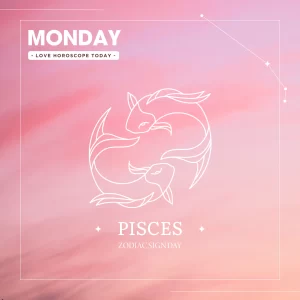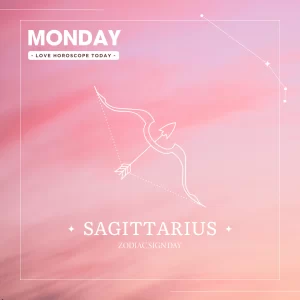
Cancer, one of the twelve constellations of the zodiac, resides in the Northern celestial hemisphere. Represented by the old astronomical symbol ♋︎, its name is derived from the Latin word for crab, and it is often depicted as such. Cancer is of moderate size, covering an area of approximately 506 square degrees, and its stars tend to be relatively faint. The brightest star in Cancer, Beta Cancri, has an apparent magnitude of 3.5. Within this constellation, there are two stars known to host planets. Notably, 55 Cancri boasts five planets, including one super-earth and four gas giants, with one of them residing in the habitable zone, featuring temperatures akin to those on Earth. Located at the central region of this celestial area is Praesepe, also known as Messier 44, which is among the closest open clusters to Earth and is a popular target for amateur astronomers.
Characteristics
Cancer is a medium-sized constellation situated in the celestial heavens. It shares its boundaries with neighboring constellations, including Gemini to the west, Lynx to the north, Leo Minor to the northeast, Leo to the east, Hydra to the south, and Canis Minor to the southwest. The International Astronomical Union has designated the three-letter abbreviation “Cnc” for this constellation since 1922. Its official constellation borders, defined by the Belgian astronomer Eugène Delporte in 1930, are outlined by a polygon consisting of three primary sides and seven western edgework-forming sides (as illustrated in the infobox). In the equatorial coordinate system, these borders span between right ascension coordinates of 07h 55m 19.7973s and 09h 22m 35.0364s, while the declination coordinates range from 33.1415138° to 6.4700689°. Covering an area of 506 square degrees, which corresponds to 0.921% of the sky, it ranks 31st among the 88 constellations in terms of size. Cancer becomes best visible at 9 p.m. during the month of March and can be observed between latitudes of +90° and -60°. However, when viewed under urban light pollution, Cancer remains invisible to the naked eye.
History and mythology
Cancer made its debut in astronomical records when Claudius Ptolemy documented it in the 2nd century CE within “The Mathematical Syntaxis,” commonly known as the Almagest. Ptolemy referred to it by its Greek name, Καρκίνος (Karkinos).
In the late 1890s, R.H. Allen proposed a theory without providing any supporting references. He suggested that Cancer may have been linked to the Akkadian Sun of the South, possibly due to its position at the winter solstice in ancient times. Later, it became associated with the fourth month, Duzu (araḫ Dumuzu), which corresponds to our June–July. Cancer was referred to as the Northern Gate of the Sun.
Cancer boasts only a few stars visible to the naked eye, with the brightest stars having a magnitude of just 4th magnitude. Consequently, it was often dubbed the “Dark Sign,” sometimes whimsically described as “black and without eyes.” Dante alluded to its faintness in Paradiso, mentioning that it remained visible throughout the night when it reached its zenith at midnight during a Northern Hemisphere winter month.
In ancient times, Cancer marked the backdrop for the Sun’s most northerly position in the sky, signifying the summer solstice. This alignment occurred when the Earth’s Sun-facing side was tilted maximally towards the south, usually around June 21 in the Gregorian calendar. This date corresponds to when the Sun is directly overhead as far north as 23.437° N. The parallel at which the Sun reaches zenith is still referred to as the Tropic of Cancer, despite the fact that this celestial position now occurs in Taurus due to the precession of the equinoxes.
Notably, the significant conjunction of Jupiter and Saturn in 1563, observed by Tycho Brahe, took place in the vicinity of Cancer, not far from the star cluster Praesepe. This event prompted Tycho Brahe to remark on the inaccuracies of existing ephemerides, inspiring him to initiate his extensive program of astronomical measurements.
In Greek mythology, Cancer is associated with the crab that emerged while Heracles (Hercules) battled the many-headed Lernaean Hydra. Hercules defeated the crab after it bit him on the foot, and as a result, the goddess Hera, who opposed Heracles, placed the crab among the stars.
Cancer | Famous NBA players

Pau Gasol
(1980.7.6)
Pau Gasol is a renowned Spanish professional basketball player who has made significant contributions to the sport throughout his illustrious career. Born on July 6, 1980, in Barcelona, Spain, Gasol’s passion for basketball was evident from a young age. He began his professional career with FC Barcelona in the Liga ACB before making a name for himself in the NBA.
Gasol was drafted by the Atlanta Hawks in the 2001 NBA draft but was immediately traded to the Memphis Grizzlies. During his time with the Grizzlies, he earned the NBA Rookie of the Year award, setting the stage for a successful NBA journey. In 2008, he was traded to the Los Angeles Lakers, where he achieved significant success, winning two NBA championships in 2009 and 2010 alongside Kobe Bryant.
Throughout his NBA career, Gasol played for various teams, including the Chicago Bulls, San Antonio Spurs, Milwaukee Bucks, and Portland Trail Blazers. His versatility as a player, combined with his leadership qualities, made him a valuable asset to any team he joined.
Apart from his club achievements, Gasol has also been a pivotal player for the Spanish national team. He has won numerous medals in European Championships and World Championships, including two silver medals in the 2008 and 2012 Olympics.
Gasol’s impact on the game goes beyond his on-court achievements. He is known for his philanthropic efforts and has been involved in various charitable activities throughout his career. His dedication to the sport, combined with his humanitarian efforts, has solidified his legacy as one of the greatest basketball players of his generation.
In conclusion, Pau Gasol’s journey from a young boy in Barcelona to an NBA champion is a testament to his talent, hard work, and dedication. His contributions to basketball, both on and off the court, have left an indelible mark on the sport’s history.
Related article
Pisces Love Horoscope Today – 2023.12.25
Pisces Love Horoscope Today Pisces Love Horoscope Today With Aries:...
Read MoreAquarius Love Horoscope Today – 2023.12.25
Aquarius Love Horoscope Today Aquarius Love Horoscope Today With Aries:...
Read MoreCapricorn Love Horoscope Today – 2023.12.25
Capricorn Love Horoscope Today Capricorn Love Horoscope Today With Aries:...
Read MoreSagittarius Love Horoscope Today – 2023.12.25
Sagittarius Love Horoscope Today Sagittarius Love Horoscope Today With and...
Read More







